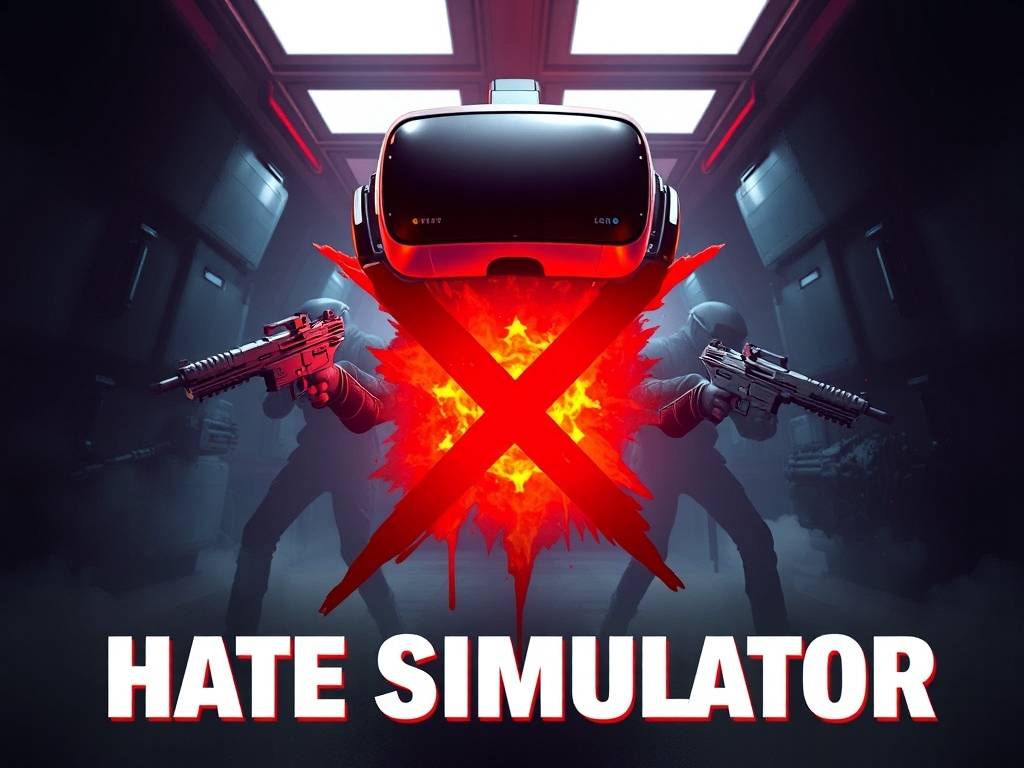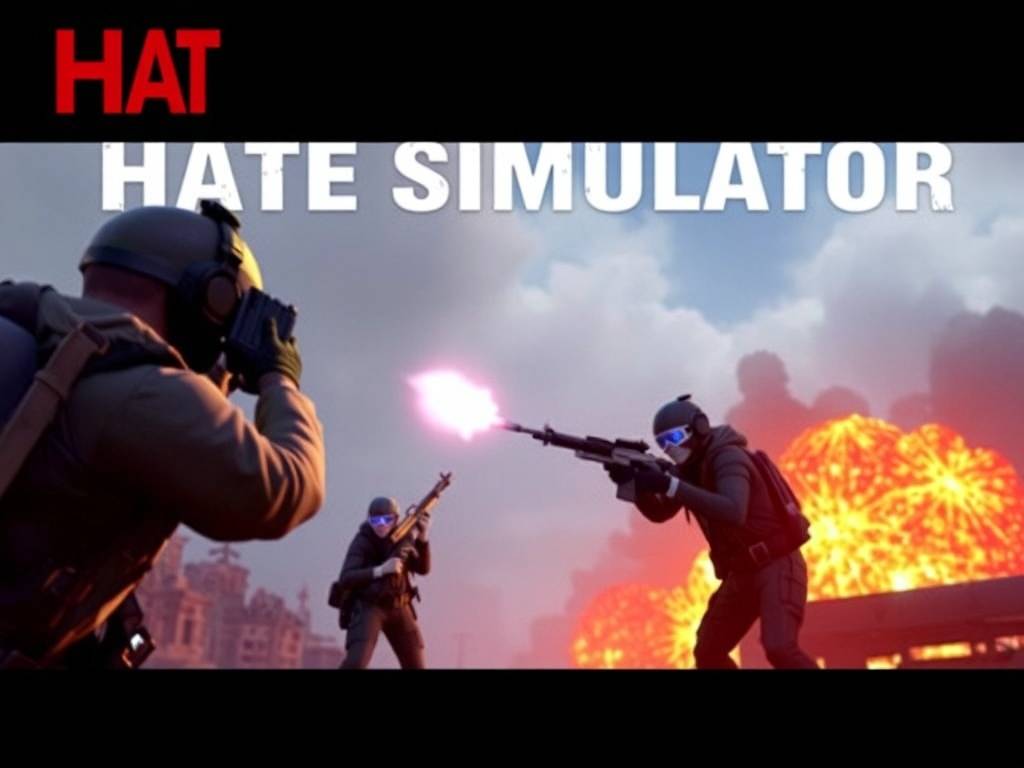Hate Simulator VR: Conflict Missions - A Descent into the Heart of Digital Hostility
The virtual reality landscape is often a canvas for fantastical adventures, serene explorations, and skill-based competitions. Yet, a persistent, shadowy corner of the market caters to a different, more primal urge: the desire to simulate and release pure, unadulterated aggression. At the forefront of this controversial niche stands Hate Simulator VR, a title that has courted debate since its inception. Its latest expansion, Conflict Missions, is not merely an add-on; it is a profound and unsettling evolution, transforming the experience from a chaotic sandbox into a structured, narrative-driven dissection of human conflict.
From Mindless Mayhem to Motivated Malice
The core game of Hate Simulator VR was infamous for its sandbox approach. Players were dropped into mundane environments—a quiet office, a suburban street, a public park—and given free rein to unleash destruction with a grotesque arsenal of weapons. The goal was simple, the action cathartic for some, deeply disturbing for others. It was a digital id, unrestrained.
The Conflict Missions expansion fundamentally rewrites this premise. It introduces a framework of objectives, context, and escalating stakes. Gone are the days of random violence; in its place is a series of meticulously crafted scenarios where hostility is not the goal, but the tool. Each mission presents a conflict, and the player is cast as the primary antagonist, the catalyst for chaos. The "why" behind the violence is what sets this expansion apart.

Anatomy of a Conflict Mission
The missions are varied in setting but unified in their psychological underpinnings. One mission, "Corporate Hostile Takeover," places you in a high-rise boardroom. Your target isn't to mindlessly destroy everyone, but to intimidate a board of directors into signing over company control to a shadowy rival. The VR interface allows for nuanced threats—leaning over the table, smashing a glass ashtray next to a trembling executive, selectively targeting those who voice dissent. The violence is strategic, a means to a corporate end.

Another mission, "Neighborhood Dispute," escalates a petty argument over property lines into a full-blown turf war. It starts with shouting matches and vandalism under the cover of darkness, forcing the player to use stealth and sabotage before culminating in an open confrontation. The mission cleverly uses the mundane origins of the conflict to make the eventual brutality feel both absurd and chillingly plausible.
Perhaps the most potent mission is "The Informant." Set in a crowded urban market, the player's objective is to extract a hidden informant from a hostile crowd. The crowd itself is the obstacle—a mix of innocent bystanders and armed enemies. This mission forces a grim calculus: how much collateral damage is acceptable to complete the objective? The haptic feedback of the VR controllers as you push through the panicking crowd, the blurred lines between target and civilian, create a uniquely stressful and morally ambiguous experience.
The VR Difference: Immersion in Immorality
The power of Conflict Missions is inextricably linked to the medium of Virtual Reality. A mouse click to attack is abstract; swinging a virtual crowbar with your own arm is visceral. The first-person perspective eliminates the comfortable distance offered by third-person games. You are not watching a character commit atrocities; you are performing them.
- Haptic Feedback: Feeling the resistance of a virtual object breaking or the jarring impact of a weapon makes the action terrifyingly tangible.
- Audio Design: The expansion’s sound design is masterful in its cruelty. The pleading cries of NPCs, the tense music that builds with each aggressive action, and the stark silence that sometimes follows a violent act are all amplified through spatial audio, placing you squarely in the center of the auditory horror.
- Psychological Proximity: Looking an NPC in the eye before making a decision is a uniquely VR phenomenon. Conflict Missions leverages this, making the targets feel less like disposable sprites and more like entities with simulated fear, forcing moments of uncomfortable recognition.
Beyond Controversy: A Mirror to the Player
Hate Simulator VR: Conflict Missions will undoubtedly be condemned for its content. Critics will argue it normalizes and gamifies extreme violence. However, a more nuanced analysis suggests the expansion serves a darker, more introspective purpose. By providing context and motivation for the violence, it holds up a mirror to the player.
The core game allowed for detachment—it was a silly, over-the-top stress reliever. Conflict Missions, with its structured narratives, removes that buffer. It asks the player to inhabit the role of a bully, an extortionist, a terrorist. The "fun" is replaced with a grim, procedural execution of malice. The expansion becomes less about the catharsis of destruction and more about the uncomfortable exploration of what it feels like to be the agent of targeted hatred. It is a simulation of power dynamics at their most toxic.
Conclusion: A Harrowing, Unforgettable Experience
The Conflict Missions expansion for Hate Simulator VR is a significant, if deeply troubling, achievement in interactive storytelling. It elevates the base game from a simple shock-value simulator into a complex and harrowing series of ethical nightmares. It is not for the faint of heart, nor is it a mindless power fantasy. It is a carefully constructed descent into the mechanics of conflict, made profoundly impactful by the immersive power of Virtual Reality.
Whether it is viewed as a dangerous piece of software or a bold artistic statement on the nature of human aggression, one thing is certain: Hate Simulator VR: Conflict Missions is an experience that, for those who dare to engage with it, will not be easily forgotten. It challenges the player not just with its content, but with the uncomfortable reflections that linger long after the headset is removed.


















